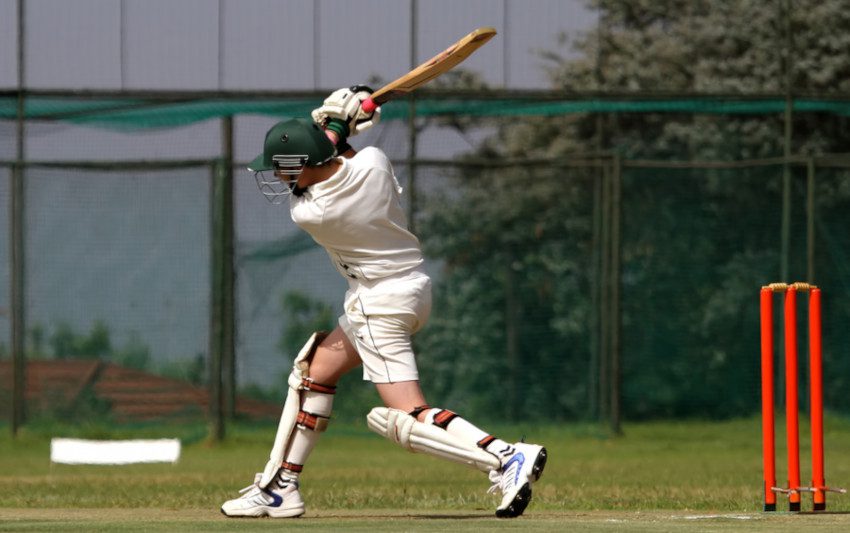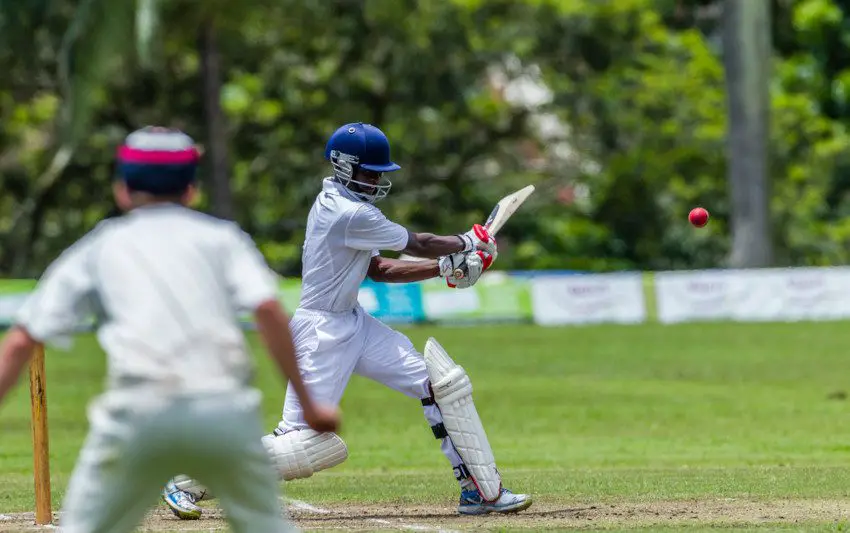Table of Contents
It can be the most exciting and most effective method of spin bowling, but what is a leg break and how do you bowl it?
What is Leg Break Bowling?
A leg break is a delivery in cricket. When sent down by a right handed bowler, the ball should turn from the leg side to the off side, when a right handed batter is facing.
If a left handed batter is facing, the ball will do the opposite. The spin will therefore go from the off stump to the leg stump.
How to Bowl the Leg Break?
This step by step guide can help you to master the art of the leg break.
Gripping the Ball
The leg break grip is often referred to as ‘two up, two down’ and that’s a good phrase to remember. It means that two fingers are positioned at the top of the ball while two more are further down beneath the seam.
The index and middle fingers will be at the top and they will be split with the seam running horizontally between them. That split should be as wide as possible without the bowler feeling uncomfortable.
The ring finger and the little finger should be beside each other at the lower side of the ball. The thumb is loose at the side. Keep a gap between the ball and the palm of the hand. The wrist and fingers are imparting the spin and the palm can impede this if the ball is too far in.
Prepare the Delivery
Before you start to run in and deliver the ball, get the wrist into position. Your bowling arm should be out to the side of your body with the wrist bent at a 90 degree angle. This will help the wrist to rotate as the ball is released.
Now line up with your target. If you are bowling right arm over the wicket, stand sideways with your legs and shoulders aimed towards the stumps.
The Run-Up
A leg break bowler’s run up should be at a slight angle into the stumps. You don’t want to be straight or have too much of an angle as you run in. This can affect the direction in which the ball travels and a slight angle is preferable. If in any doubt, watch videos of some leg spinners in action.
Leg break bowlers do not need to put too much speed into the ball. A gentle jog into the wicket is preferable. It’s all about getting some momentum into the crease before the wrist takes over and does the bulk of the work.
Releasing the Ball
This is where the magic happens as far as leg break bowlers are concerned. When you are ready to release, the non-bowling arm acts as a guide to steer the delivery. So, if you are a right arm leg spinner, the left arm will be lifted to a horizontal position and it will point back down the pitch towards the batter.
The body is now rotated so that it faces front on towards the batter. The back foot moves around and forward while the bowling arm now rotates up and over the right shoulder, close to the bowler’s left ear.
As you let go of the ball, spin the wrist from right to left. The ball will turn anti clockwise as it is released. The back of the hand faces the bowler while the palm faces down towards the pitch. Follow through with the shoulder facing the target.
Speed of the Ball
The leg break bowlers may just deliver the ball more quickly than their off spinning counterparts. Professional leg spin bowlers have a fairly wide range when it comes to speed and it can fall anywhere between 70 to 95 kph which converts to 45 to 60 mph.
If the ball is delivered too quickly, it will have less chance to turn. If it’s too slow, the turn may be there, but batters will have more time to select their shot. There is, therefore, an optimum speed for leg break bowling.
Obviously, for those just starting out in the game, it’s going to be hard to measure that pace. Most schools and local clubs simply don’t have the funds to cover luxury equipment such as speed guns.
However, as you practise, you will find a natural pace and, for the few that do make it through to the professional ranks, they can then start to measure those speeds with accuracy,
Where to Pitch the Leg Break
Remember that, if the leg break is executed properly, the ball will turn from the leg stump to the off stump when a right arm bowler is delivering to a right handed batter. Because of that, the bowler needs to think carefully about where they want to pitch that ball.
In terms of direction, the ball shouldn’t land too far outside of the off stump. With the turn taking the ball away, the batter can simply let the ball go through to the wicket keeper.
An ideal point to pitch the ball would be between leg stump to middle and off. This would bring the possibility of bowled, caught behind and LBW dismissals into play.
If the right arm leg spinner is bowling to a left handed batter, they can look to deliver that ball slightly wider of off stump.
As regards to the length, an ideal leg break delivery would be fairly full. The bowler wants to tempt the batter into driving at the ball, which would be a risky shot if there is any significant turn.
A short ball would negate any spin and would give the batter more time to play it. Anything too full runs the risk of developing into a full toss.
Factors to Consider
Among a number of other factors to consider are pitch conditions. Extra bounce can be a useful weapon for any spinner and a hard wicket will assist this. If the ball is bouncing, it may also mean that the spinner can bowl a shorter length and still get rewards.
In contrast, a slow, low pitch isn’t conducive to spin bowling. If this is affecting the spinners, they may look to rely on their variations and to bowl an even fuller length to try to compensate.
Difference between Leg Break and Leg Spin
This is a debatable point and one that doesn’t have a definite answer. If there are differences between leg spin bowling and leg breaks, they are very subtle.
In general, when someone refers to leg spin bowling they are talking about the overall method. In contrast, a leg break is a specific delivery – typically the stock delivery – used by a leg spinner.
Conclusion
There are so many leg break bowlers around today that it’s hard to believe that this type of delivery had almost disappeared from the game. We should obviously thank the great Shane Warne for its resurgence, but let’s not forget his predecessors and contemporaries such as Abdul Qadir and Anil Kumble.
While there are far more leg spinners around in the modern game, this is a very difficult delivery to master. Practice is essential in the nets and it can take a long time to perfect this art.
A leg break can, however, be the most effective weapon for any bowler. The spin is more pronounced than with conventional off spin and that’s why it’s harder for batters to deal with.
The concluding message for all young leg break bowlers is, therefore, to persevere and the rewards can follow.


